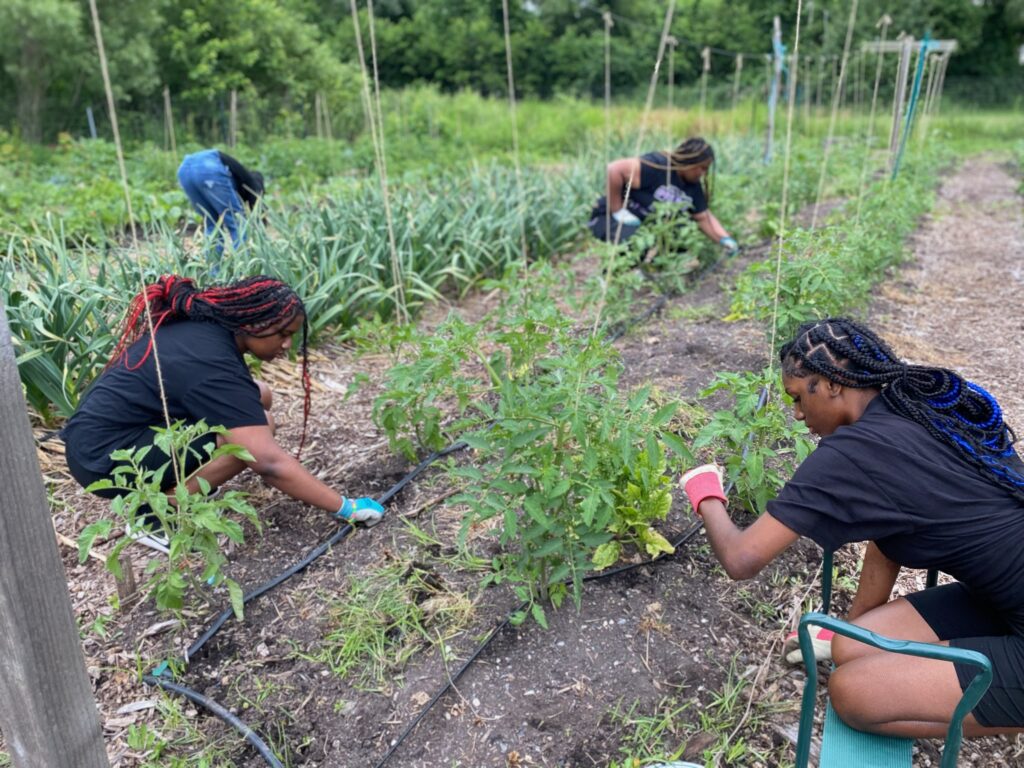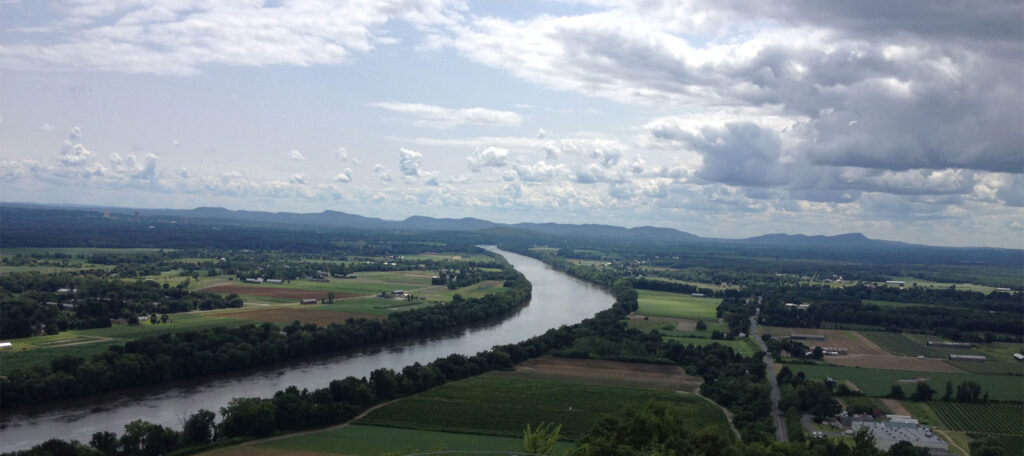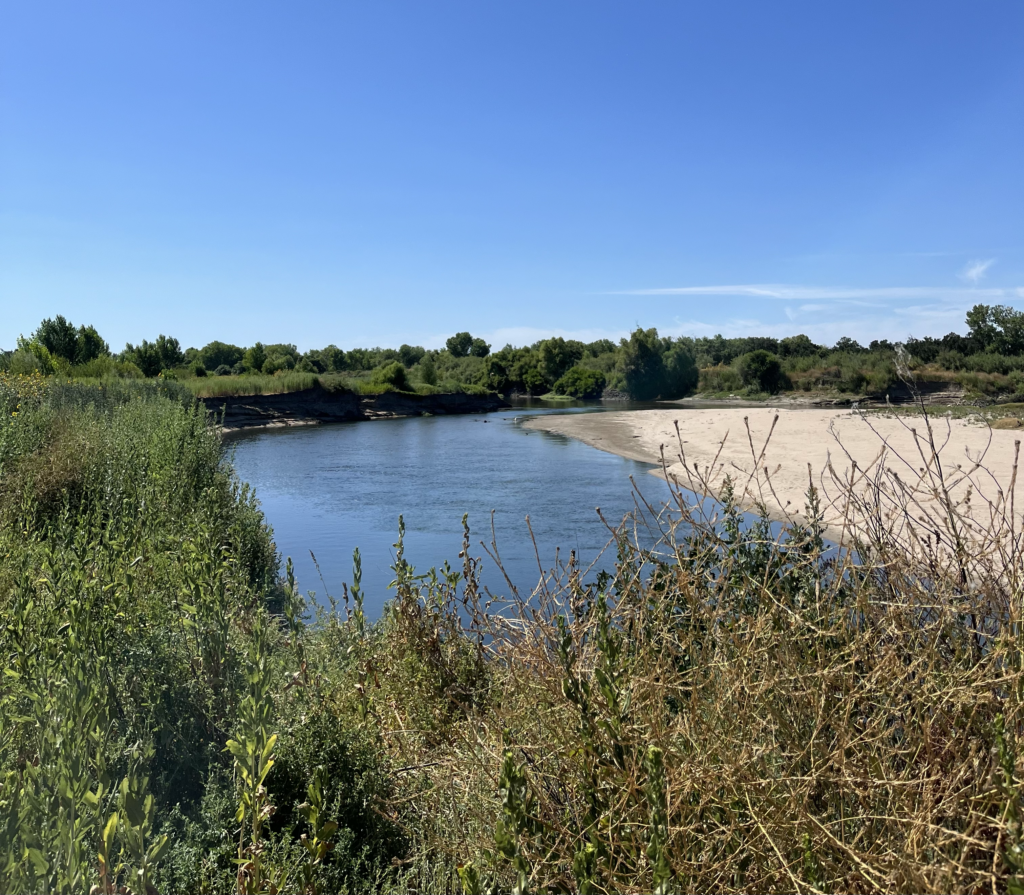The River in a Mussel Shell
Mussels have much to teach us about the health of our watersheds if we step into the creek and take a closer look at their lives. Read an adaptation of Abbie Gascho Landis' book Immersion: The Science and Mystery of Freshwater Mussels.
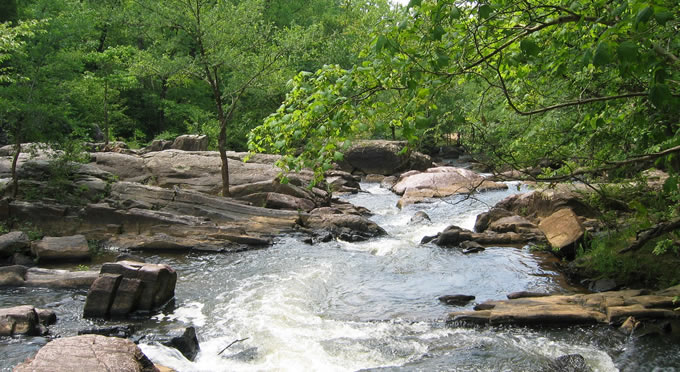
On a March day in 2009, nine years after Chewacla Creek dried up, I stood in the roadside weeds near a county road bridge in Alabama. The creek—the city of Auburn’s water supply—was flowing again, thanks to legal protection. I was wiggling first my legs, then my arms, into a borrowed wet suit. The zipper gaped like an open shell, displaying my pregnant belly, almost four months round. With effort, I zipped up the two halves, encasing myself. My first child would dangle below me while I snorkeled—something I’d never done before.
I had joined this Auburn University field crew on a whim, based on a last-minute invitation. One these biologists was my husband, Andrew. He watched his whole family squeeze into my wet suit, then pointed us toward the creek.
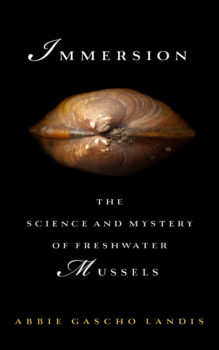 We thrashed along, dropping down a steep bank, departing the road where it headed over the bridge. Stepping into the creek, we spread out and moved upstream, away from the bridge where we had parked the truck. I sank to my knees, letting cool water flow over my thighs. It was shallower than a bathtub. When I eased forward onto my hands, the water didn’t even cover my back. Biting the snorkel mouthpiece, I submerged my head through a layer of crisp-edged leaves and into another world.
We thrashed along, dropping down a steep bank, departing the road where it headed over the bridge. Stepping into the creek, we spread out and moved upstream, away from the bridge where we had parked the truck. I sank to my knees, letting cool water flow over my thighs. It was shallower than a bathtub. When I eased forward onto my hands, the water didn’t even cover my back. Biting the snorkel mouthpiece, I submerged my head through a layer of crisp-edged leaves and into another world.
The creek filled my wet suit and filled my ears, dimming other sounds, gurgling through my head like a pitcher pouring into an endless glass. I reveled in the bright underwater world, delighting at each colorful darter slipping in and out of view. I grazed my belly upstream into better visibility, moving slowly to the rhythm of my breath whooshing up and down my snorkel.
Then I lifted my head and realized I had fallen well behind the others. I slurped myself to a standing position and waded toward the bank. They had told me that the creek’s edges often held many hidden freshwater mussels. Finding those mussels was our purpose for snorkeling Chewacla Creek in March.
I refocused, remembering photos I’d seen, and tried to imagine our quarry. These are not the coal-black ocean mollusks clinging like butterflies to rocks or jumbled on plates under decadent sauces. Neither are they the notorious zebra mussels, Dreissena polymorpha, invasive species plaguing rivers and lakes north of here. The family Unionidae, native freshwater mussels, lives in creeks and rivers and includes almost three hundred species in North America. Nearly 70 percent of them are imperiled.
These freshwater mussels live mostly buried. Their shell edges are parted like a surprised gasp, exposing two apertures. One intakes and the other releases water, which is how mussels eat, breathe, and even gather sperm to meet their eggs. Those apertures actually look like Georgia O’Keefe paintings—flowers, female anatomy—elegant ovals decorated with variously shaped and colored papillae. Apertures, papillae, curve of a shell. This is our search image.
We stood in our wet suits, leaning toward the creekbank. Andrew pointed; I struggled to see what he described. Between my protruding abdomen and taut wet suit, I couldn’t bend my waist, so I bent my knees and tipped forward.
“She’s displaying,” he told me. He waited while I stared.
Then the mussel seemed to materialize, differentiating from the leaves and rocks. Before my eyes, the creek bottom gained a dimension as I perceived its complexity. A little spectaclecase, Villosa lienosa, was doing the work of a freshwater mussel—filtering. She was also doing the work of many females this time of year—displaying. Her gills bulged with offspring that she’d brooded for months. Now the time had come. Above those offspring waved her mantle lure, decorated with multiple tentacles that looked like a clump of small black worms. The bait.
Ripe with progeny, the female mussel must attract a fish to deliver her babies into the world. Striking the bait, a fish will release thousands of these larval mussels, which will hitch a ride on the fish’s gills, transforming into independent juveniles and then letting go and sinking into their new creekbed lives. I was impressed. Delivering offspring into the world clearly demanded heroic efforts.
I recognized this turning inside out for the next generation. This mussel and I were similarly vulnerable, preparing to empty our bodies into the future. Watching a wild mussel display her lure opened a door in my mind, like my first kiss. I became a freshwater mussel groupie. I fawned over their photographs, mussels ranging in size from thumbnail to dinner plate, building glassy or ridged or pimpled shells that are brown or black or yellow, with or without dark stripes fanning across them, and always paved inside with pearl—white, pink, deep violet. I stalked them from a distance, writing their names in my notebooks: fatmucket, pistolgrip, heelsplitter, shinyrayed pocketbook, spectaclecase, pigtoe, snuffbox. I pored over their bios. Posters of mussels hung in our bedroom.
Mussels ingest particles suspended in water drawn across their gills, which sort particles as edible or inedible. The water flowing in Alabama’s creeks and rivers, the water sitting in catfish ponds and reservoirs, the water gushing from my own faucet has probably passed through the interiors of freshwater mussels. As they filter feed, mussels also ingest contaminants into their sensitive bodies. Mussels burrow at the intersection of water and earth, so they suffer with disruptions to both creek channel and water. Their life cycle requires fish to host their parasitic larvae, linking mussels to vulnerable fish diversity. In these ways, mussels embody the whole river.
Mussels’ peril is our own. We need the same thing—plentiful clean water in healthy creeks and rivers. I think of mussels as I watch the kitchen spigot run. I heed their dwindlings and extinctions as a smoke detector piercing the night. Feel alarmed, they insist. Get up and look around. The house just might be on fire.
Adapted from Immersion: The Science and Mystery of Freshwater Mussels
Abbie Gascho Landis
© Island Press
http://islandpress.org/book/immersion
 Abbie Gascho Landis is a writer, veterinarian, and naturalist. Her book Immersion: The Science and Mystery of Freshwater Mussels (April 2017, Island Press) is an invitation to see rivers from a mussel’s perspective. Landis has won Duke University’s Center for Documentary Studies 2015 Essay Award, an Arthur DeLong Writing Award, and was a finalist for the Constance Rooke Creative Nonfiction Award. Landis holds a bachelor’s degree in English and biology from Goshen College and a doctorate in veterinary medicine from The Ohio State University. Her writing has been published in Pinchpenny Press, Full Grown People, and Paste Magazine. She and her family live on a farm in Upstate New York.
Abbie Gascho Landis is a writer, veterinarian, and naturalist. Her book Immersion: The Science and Mystery of Freshwater Mussels (April 2017, Island Press) is an invitation to see rivers from a mussel’s perspective. Landis has won Duke University’s Center for Documentary Studies 2015 Essay Award, an Arthur DeLong Writing Award, and was a finalist for the Constance Rooke Creative Nonfiction Award. Landis holds a bachelor’s degree in English and biology from Goshen College and a doctorate in veterinary medicine from The Ohio State University. Her writing has been published in Pinchpenny Press, Full Grown People, and Paste Magazine. She and her family live on a farm in Upstate New York.

